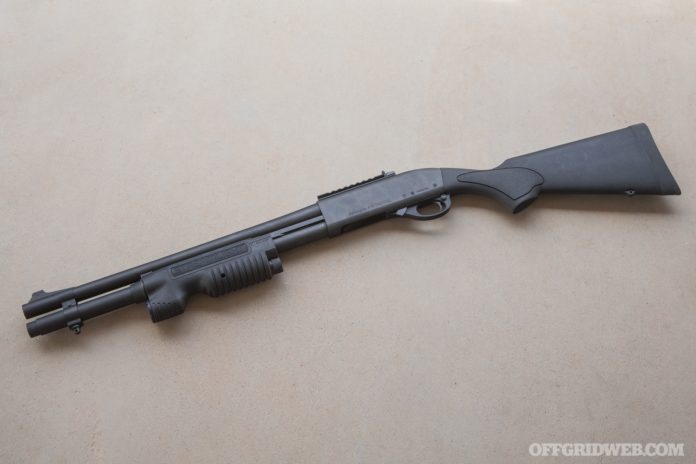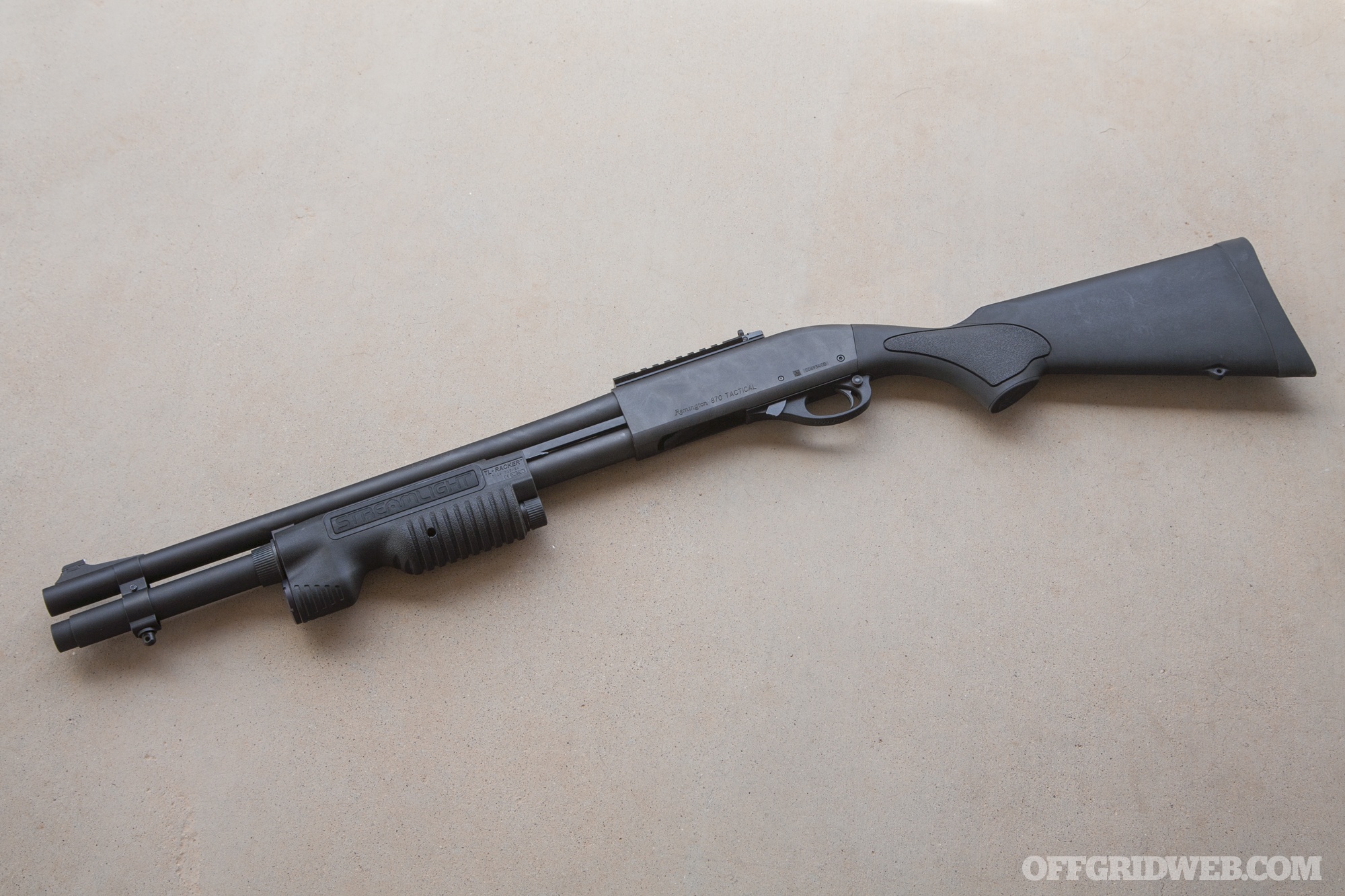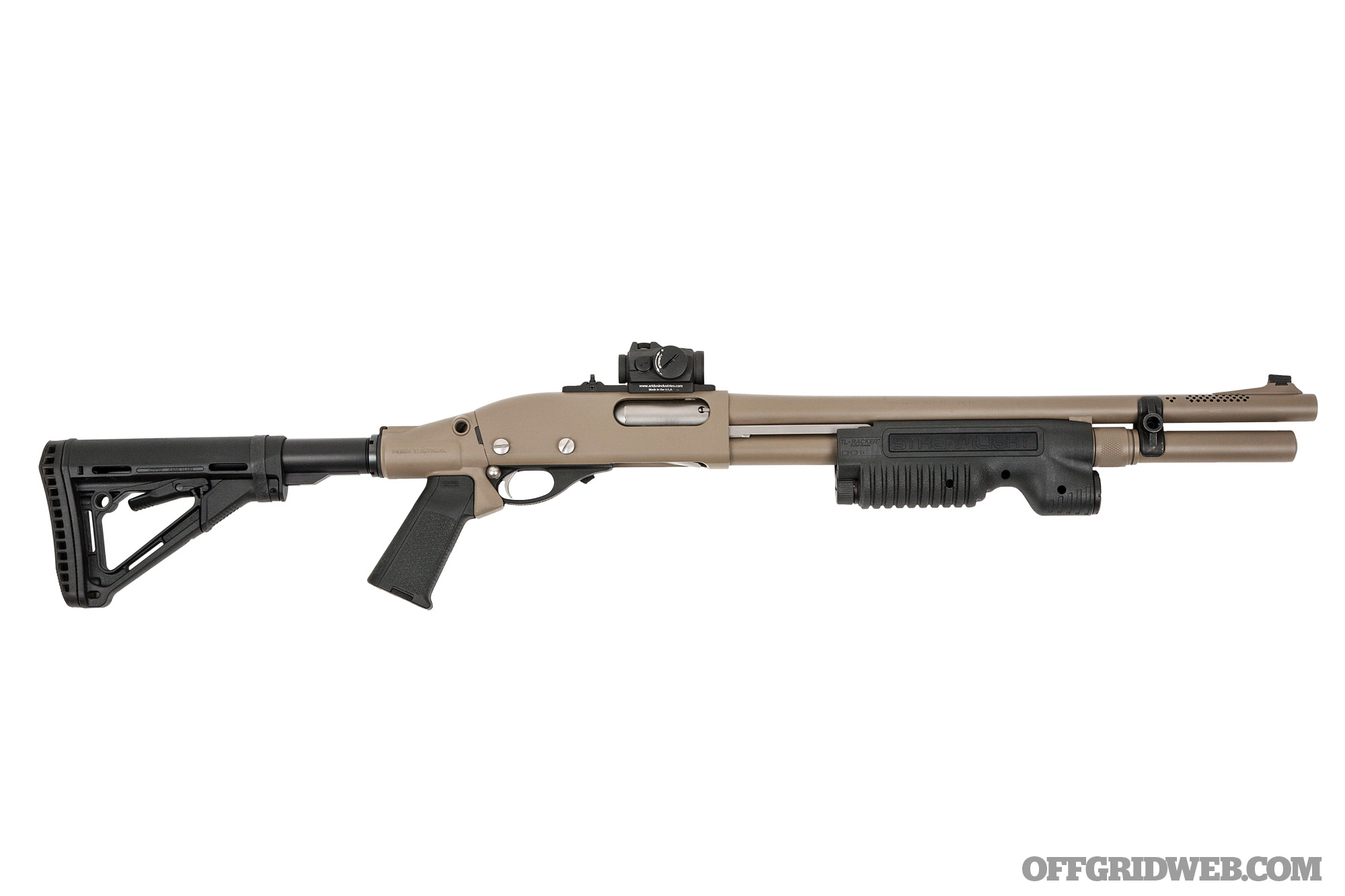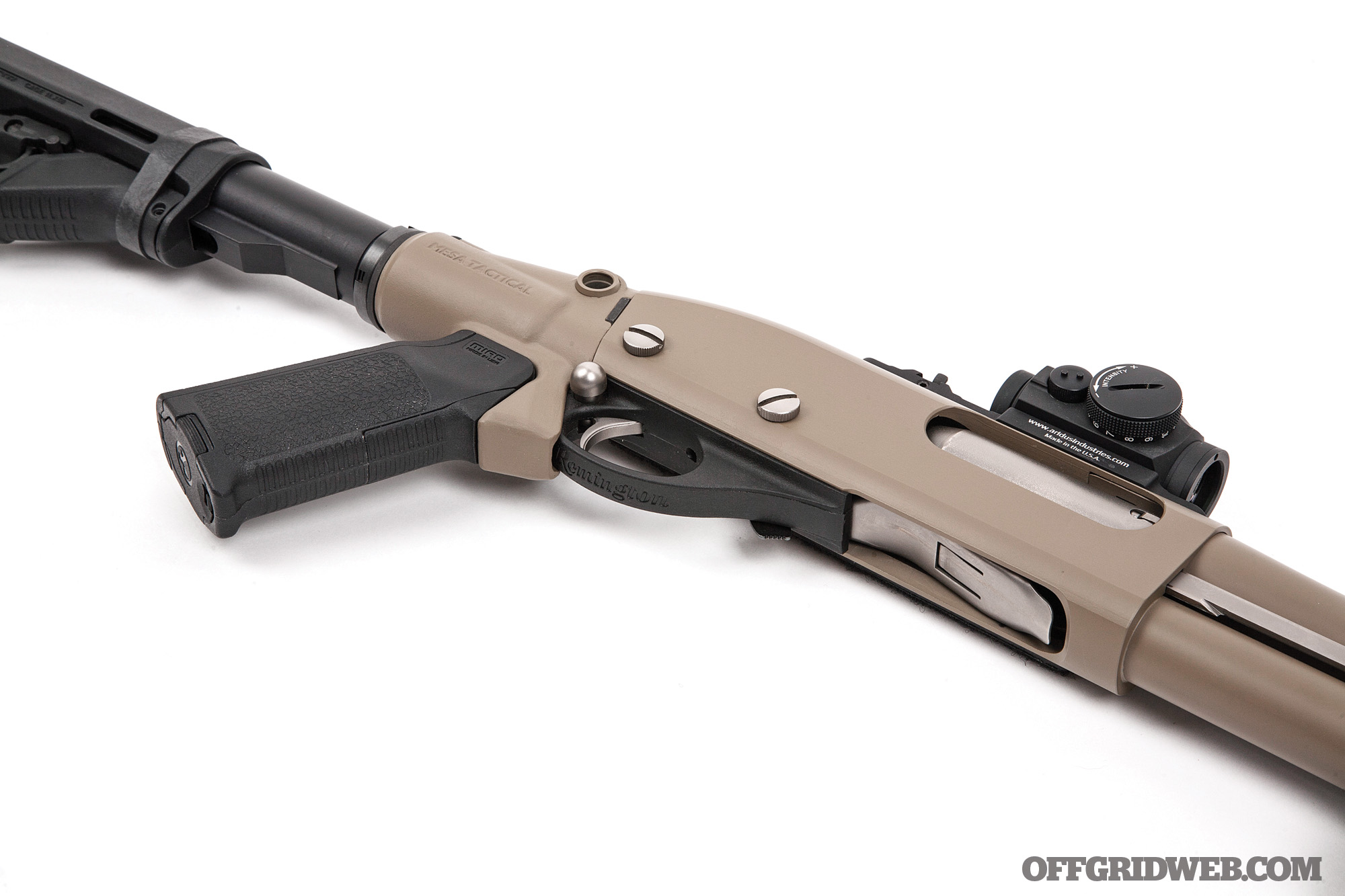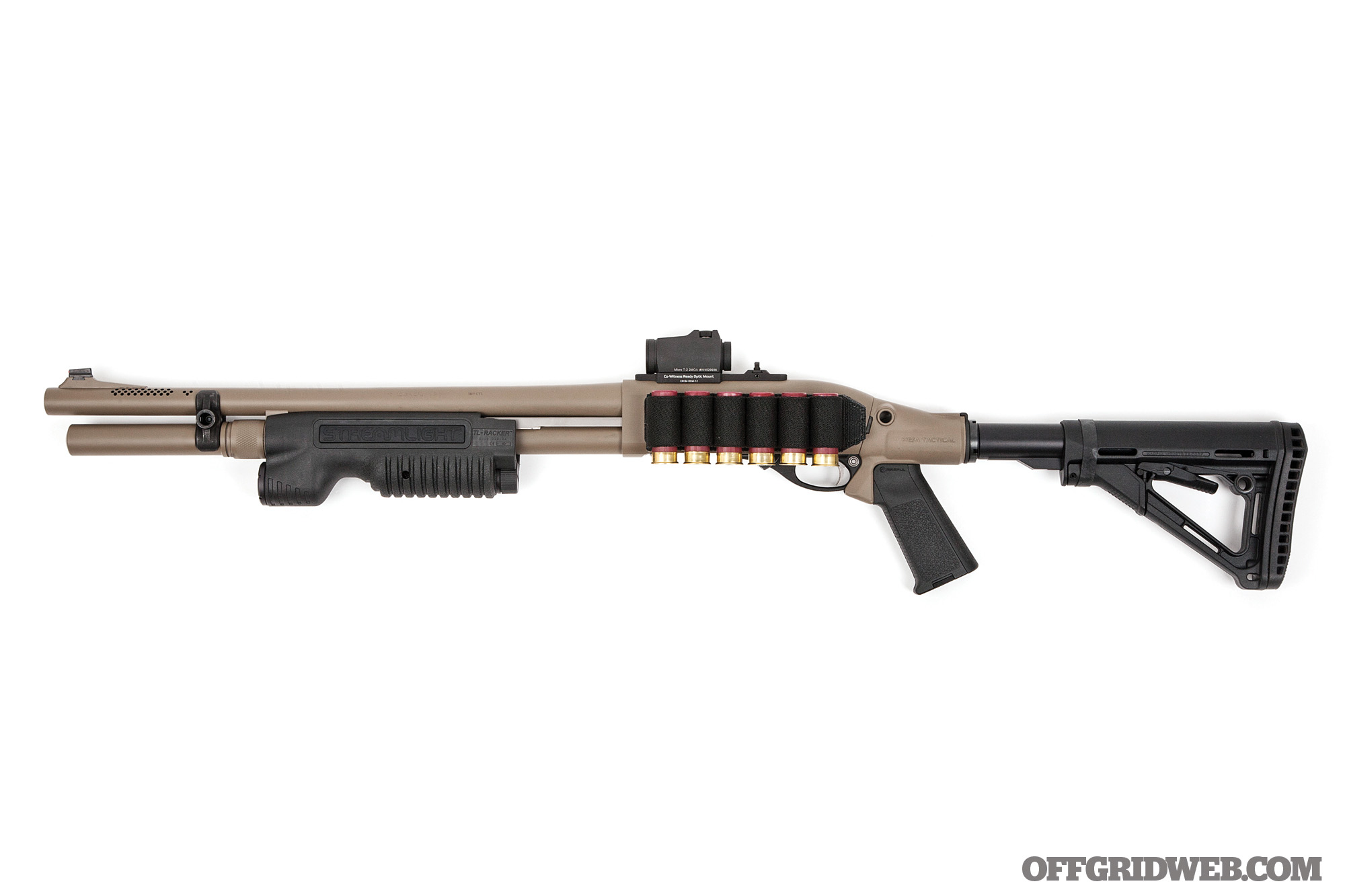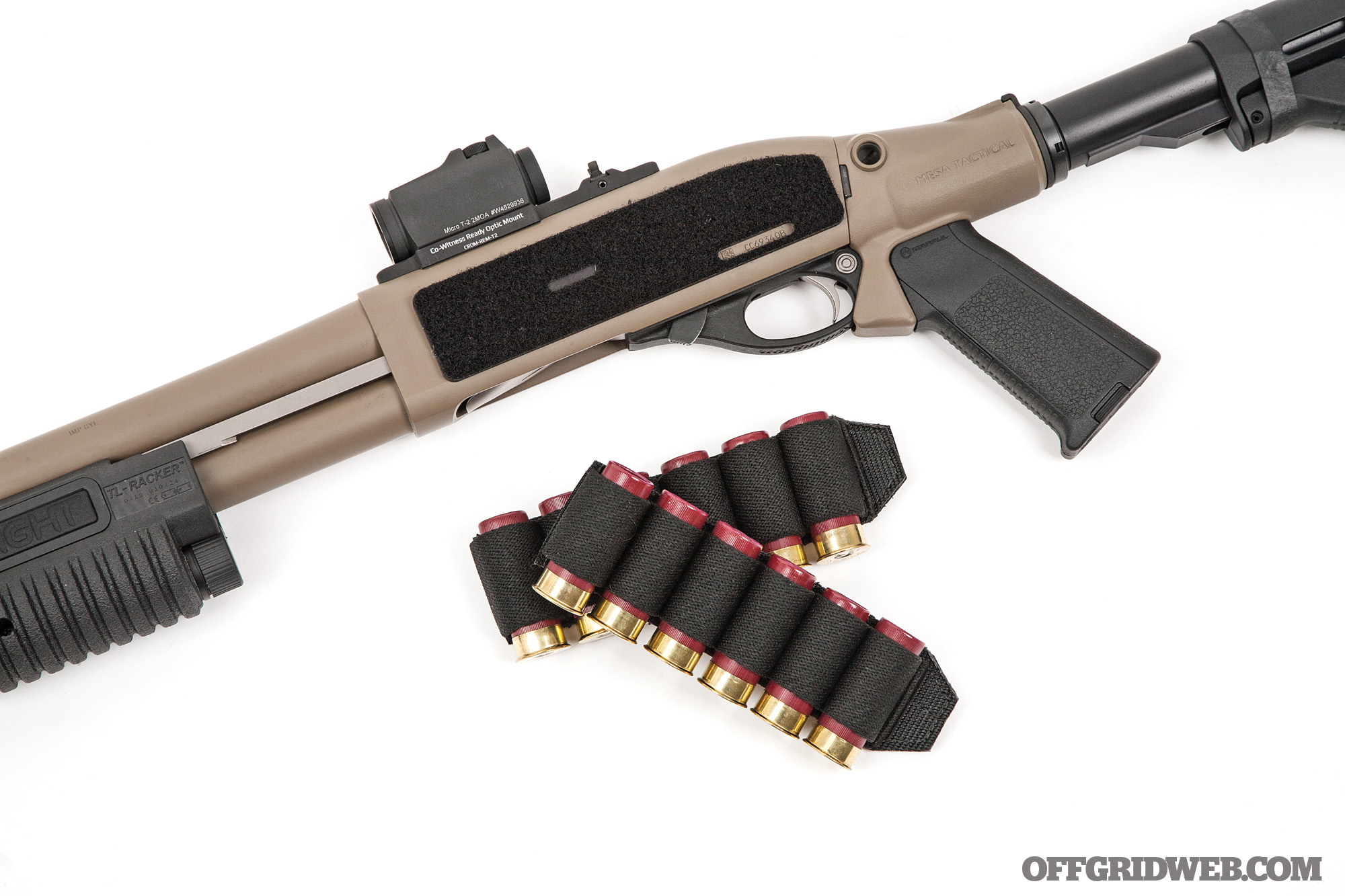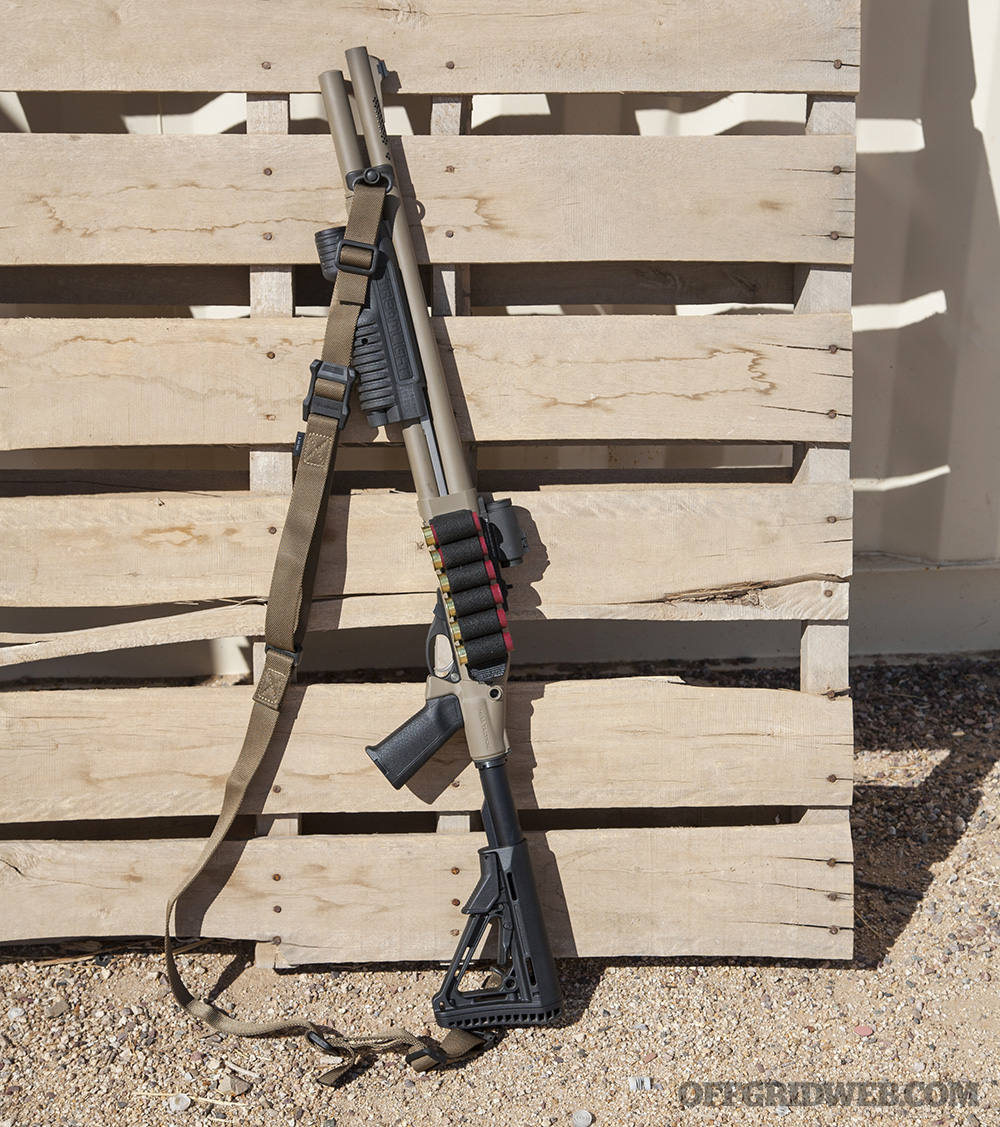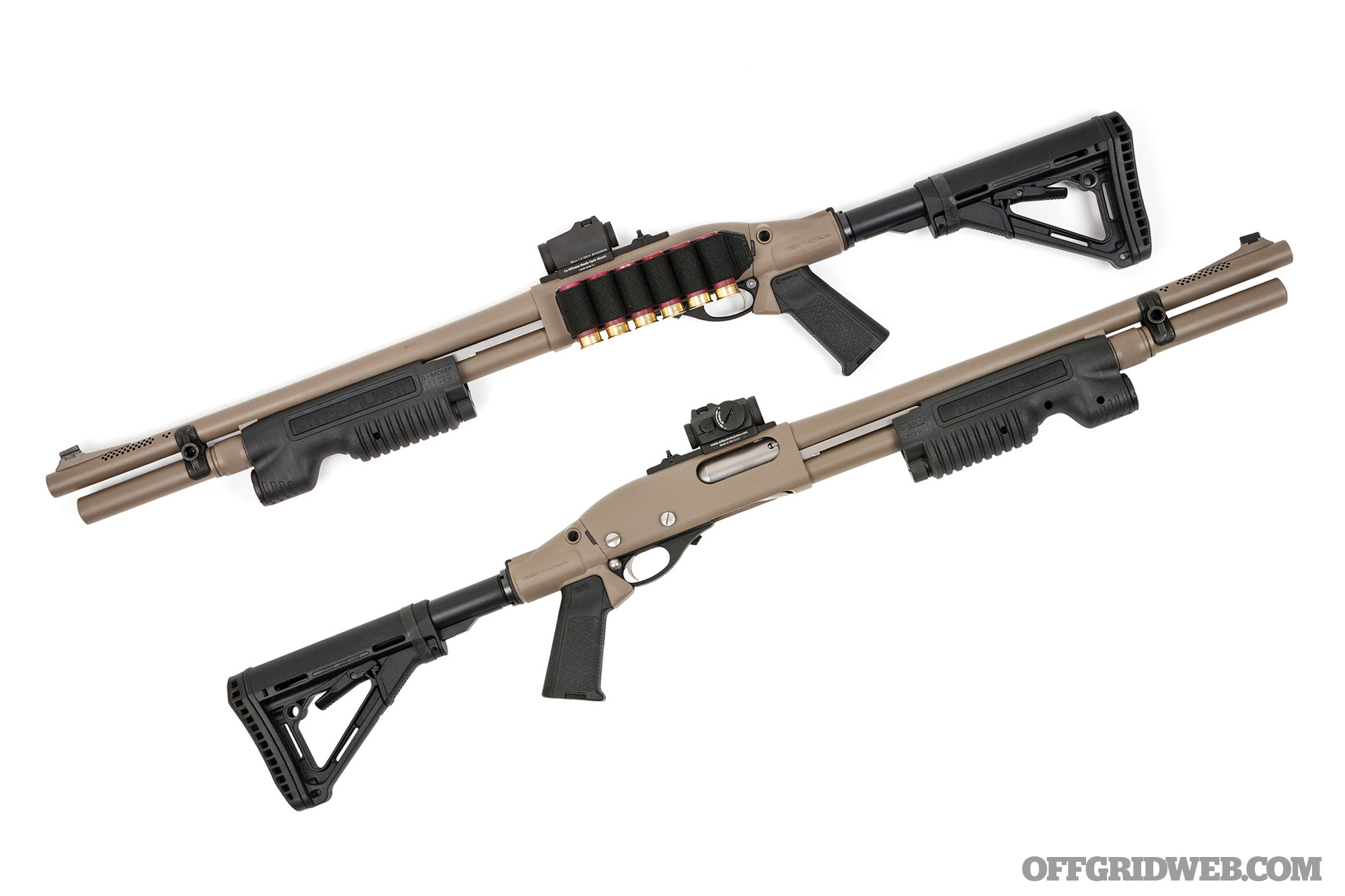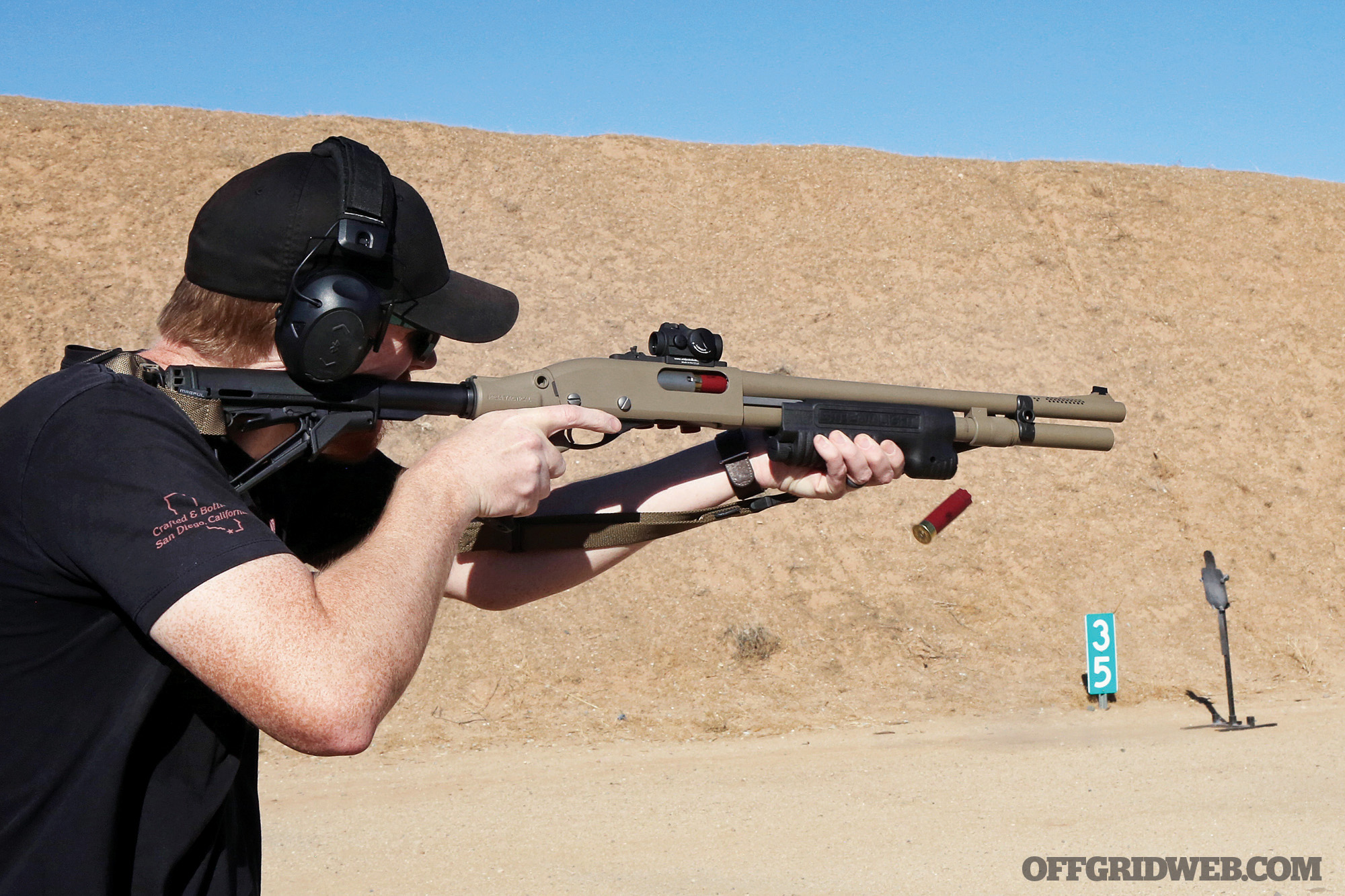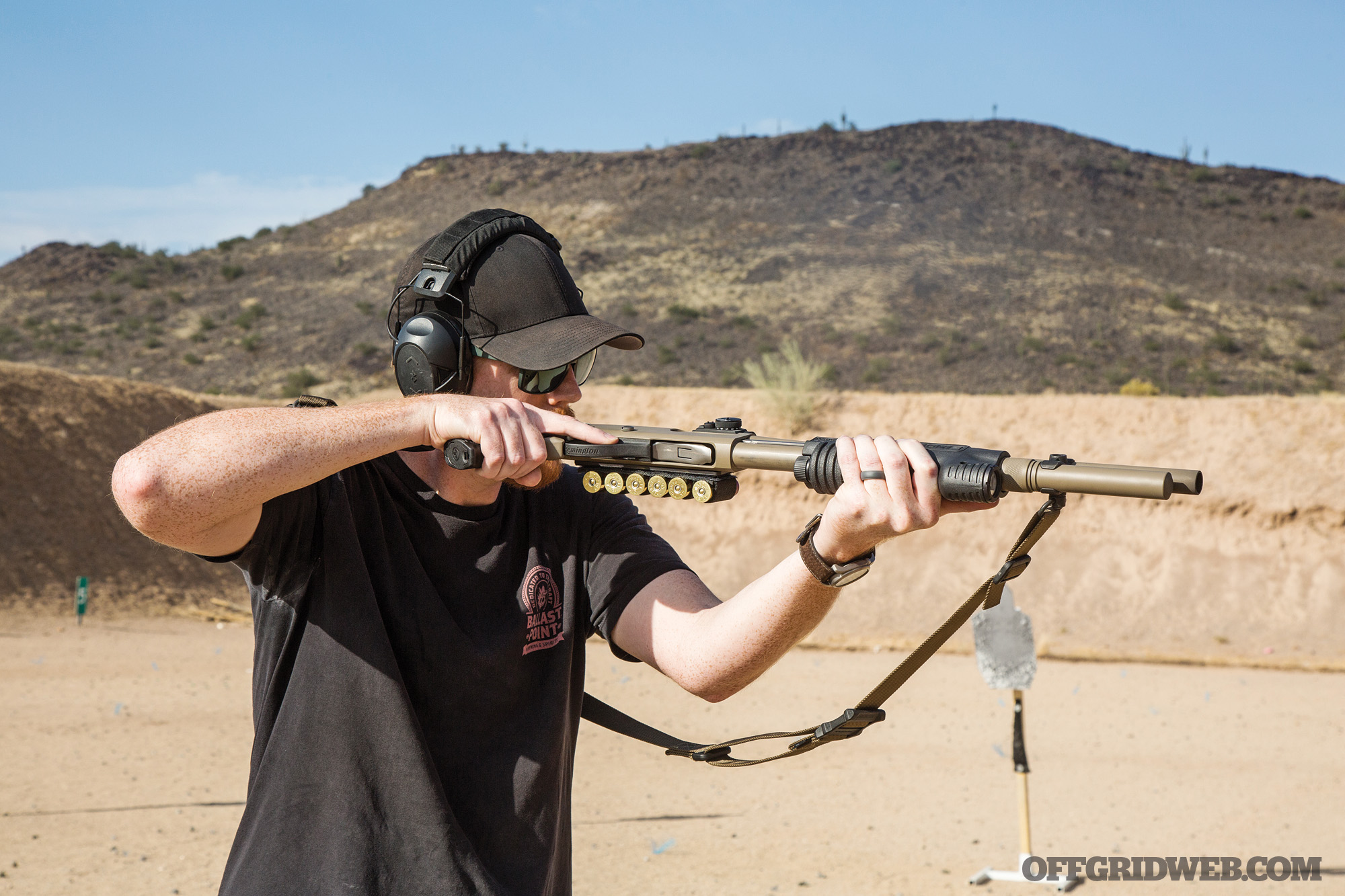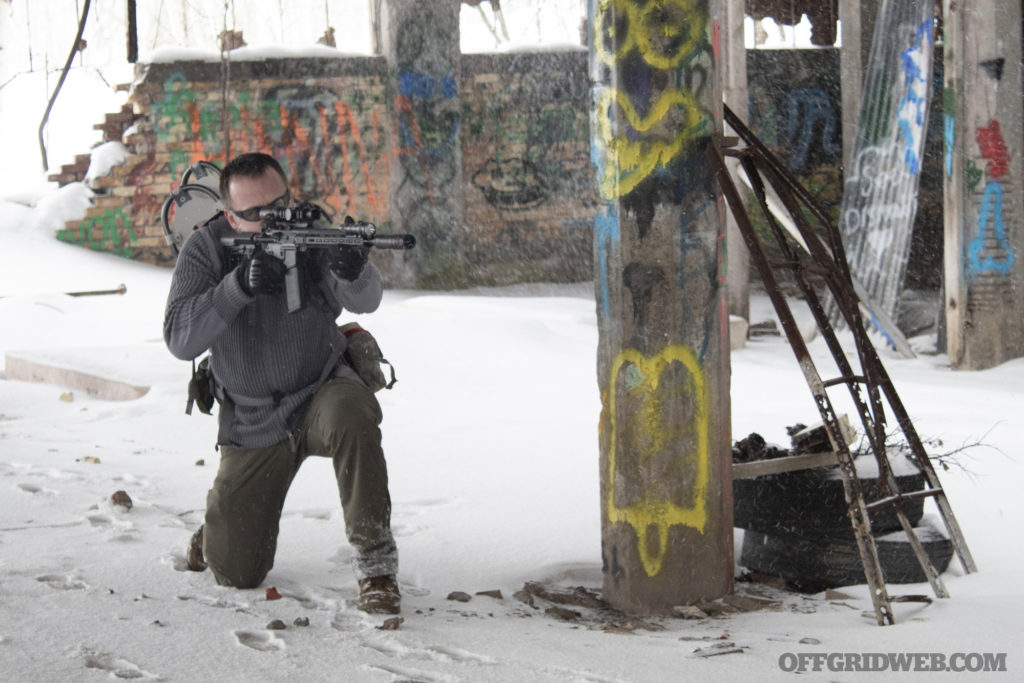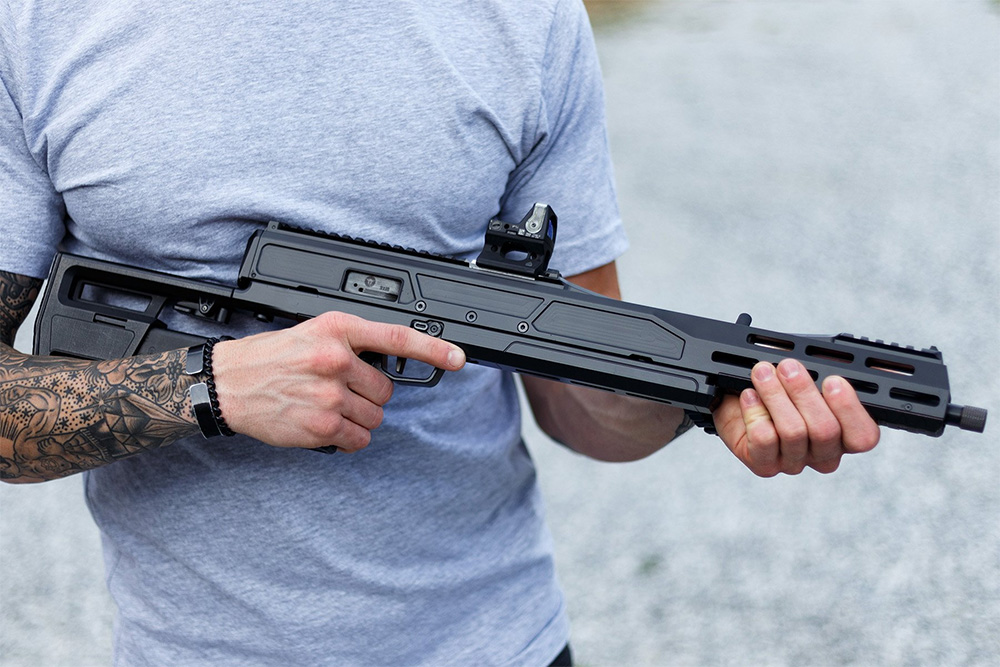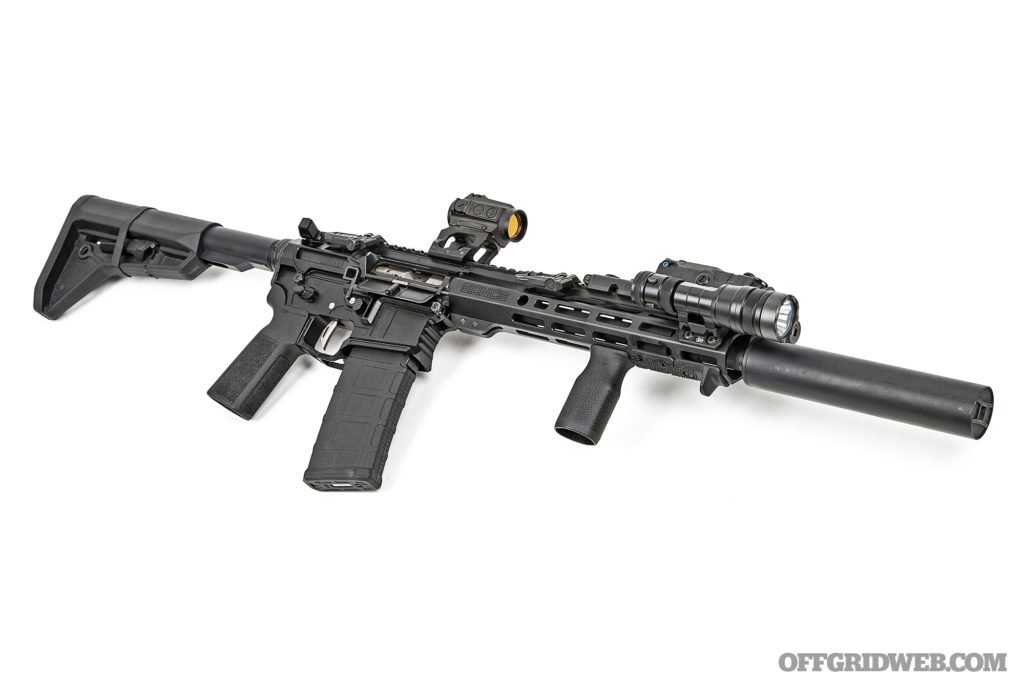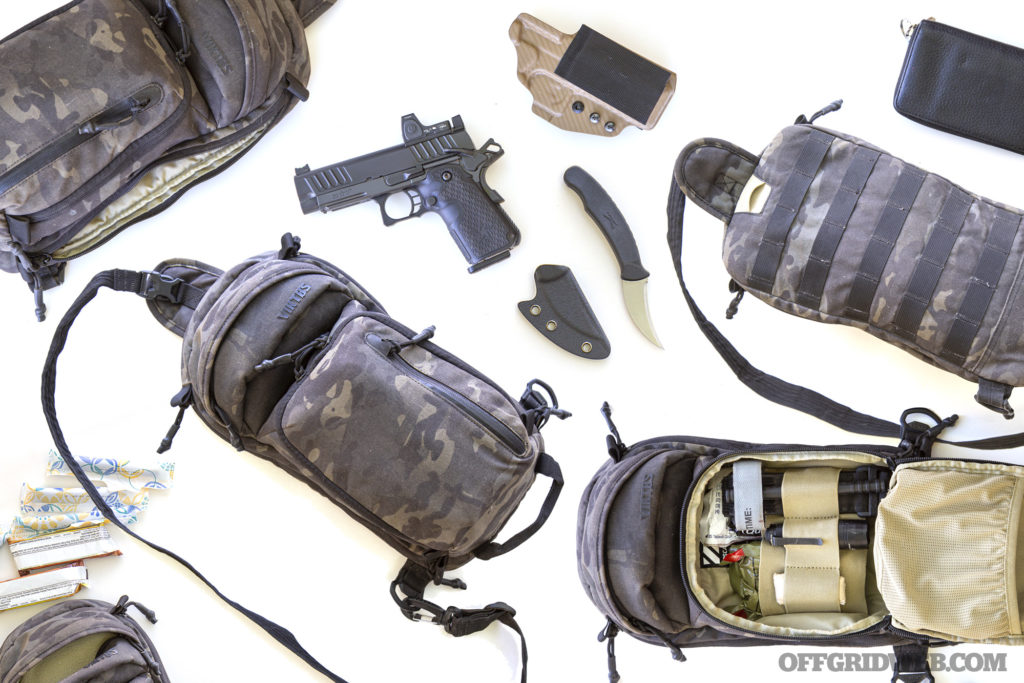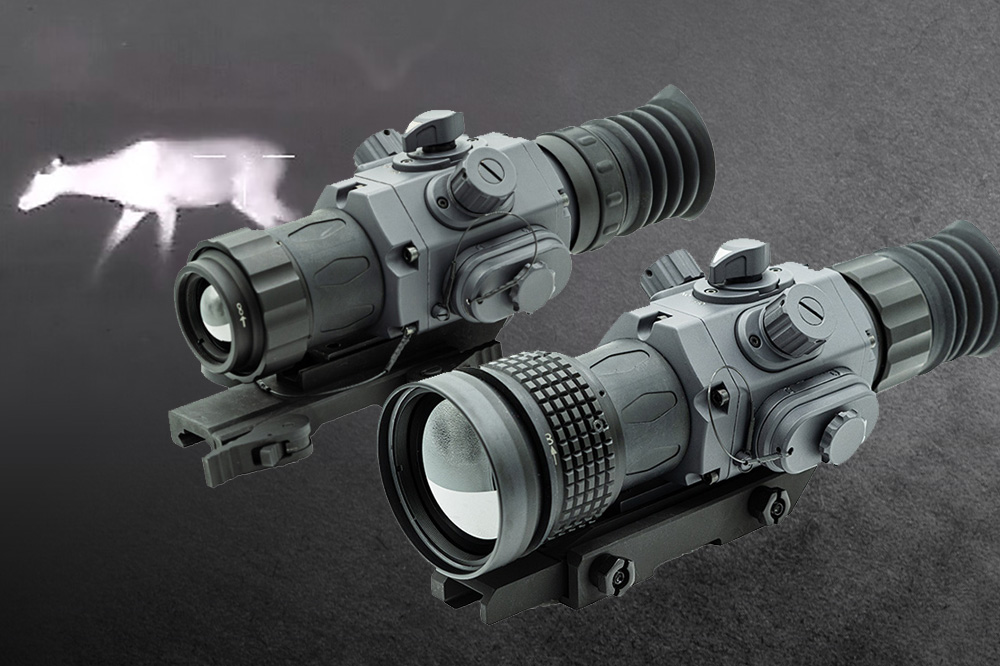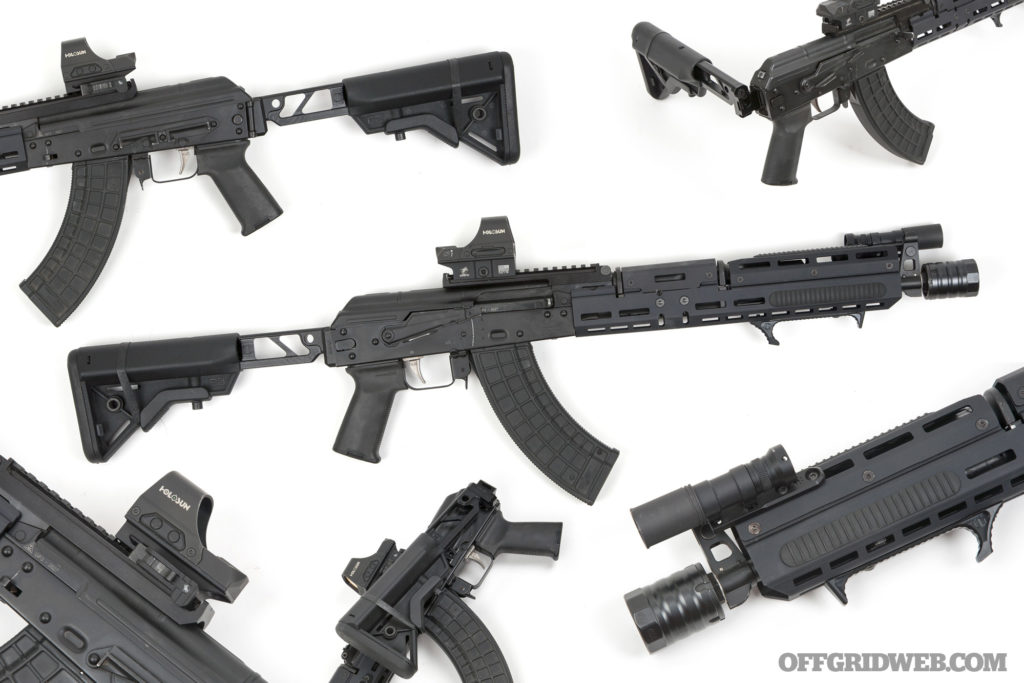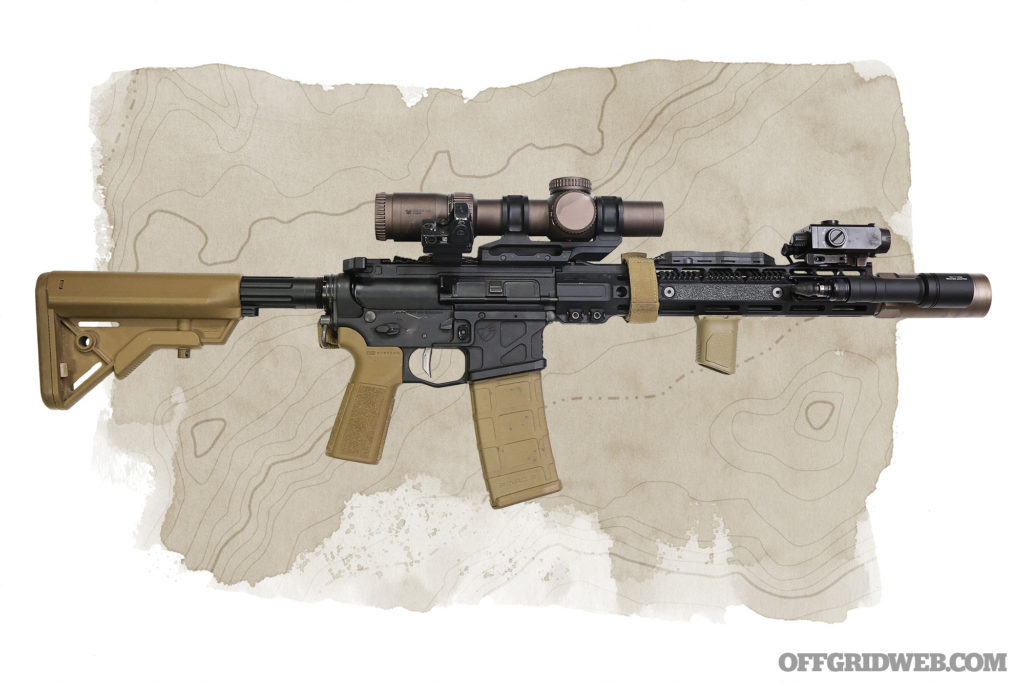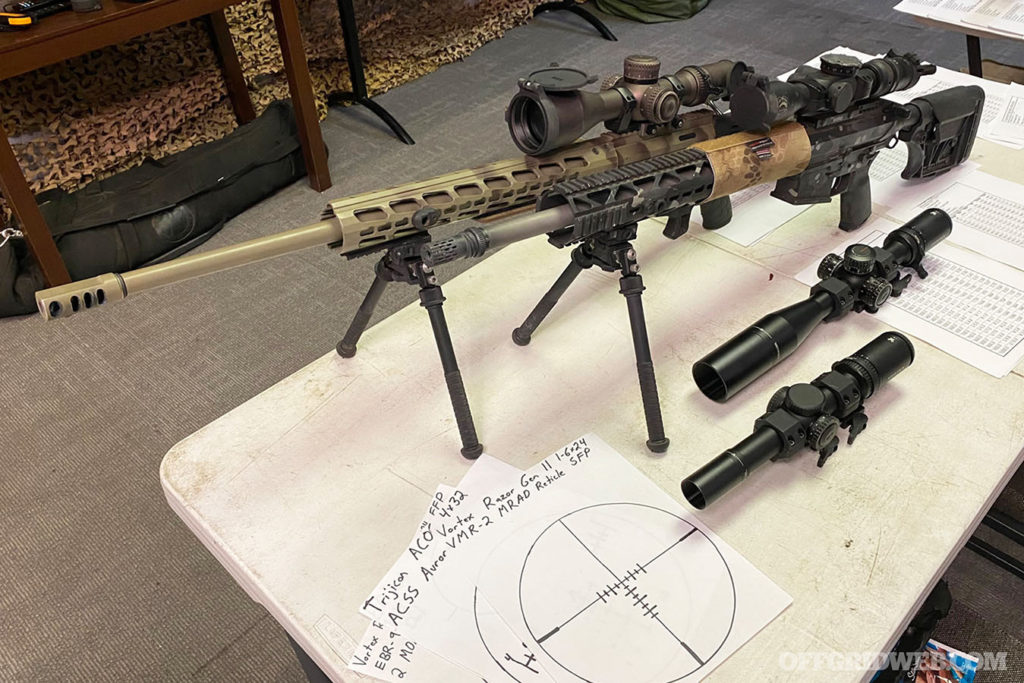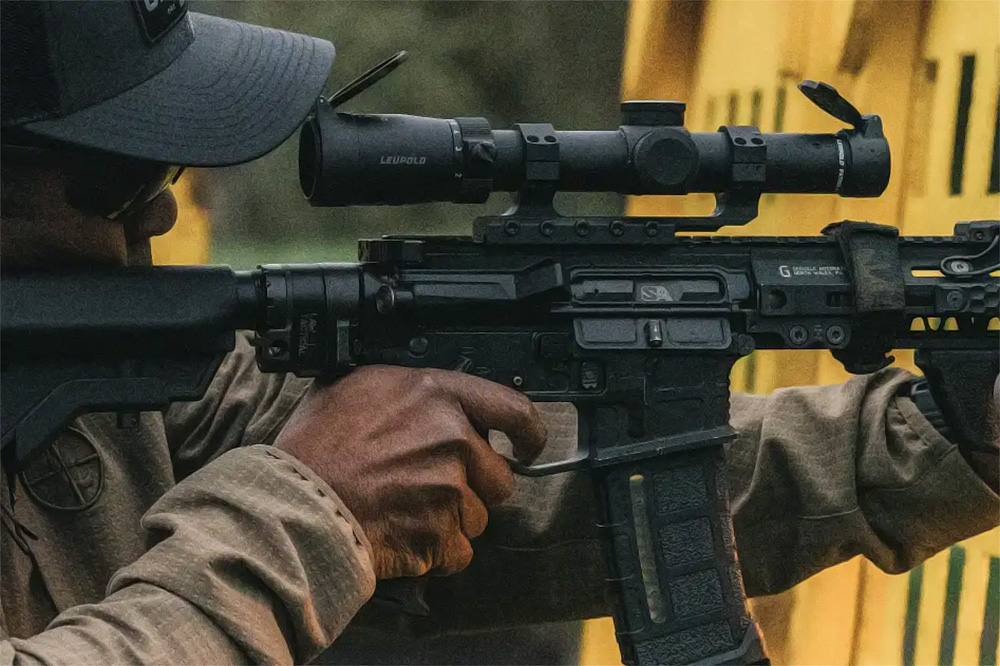When the subject of recoil management comes up, we’ve noticed that an element of machismo often comes with it. Who cares if a weapon kicks like a mule? Lean into the recoil and suck it up, princess! say the self-proclaimed experts with their chests puffed out. Admittedly, you shouldn’t be developing gnarly shoulder bruises after shooting a 10/22, but recoil management is a worthwhile consideration for other weapons — shotguns are a prime example. We’ve all seen videos of young or inexperienced shooters picking these guns up for the first time, and nearly toppling over after the first round. More experienced shooters may feel discomfort after a few dozen full-power loads. Rather than accepting these issues as inherent to the platform, it’s worthwhile to take a look at what can be done to manage them.
As with any weapon, proficiency with a shotgun is a by-product of two factors: software and hardware. The importance of software — meaning your training and experience — cannot be overstated, but the gun itself is also a contributing factor. That’s why muzzle brakes, compensators, weighted buffers, and other recoil mitigation systems exist. Bearing in mind these two factors, we set out to improve the performance of our Remington Model 870 pump shotgun.
This article was originally published in Issue 21 of our sister publication Concealment magazine.
Above: Here’s our humble Remington 870 Express Tactical before we sent it out to Vang Comp. It was completely unmodified aside from the Streamlight TL-Racker.
The Hardware – Vang Comp Systems
Our project began with an 870 that’s resided in our gun safe for several years. This is the Express Tactical — a slight step up from the basic Express model. Out of the box, it included an 18.5-inch barrel with extended “Tactical” choke, factory-installed Picatinny rail, XS ghost ring sights, and black synthetic furniture. The gun worked fine in this configuration, but we knew it could be better, so we reached out to Vang Comp Systems in Las Vegas, Nevada. Their gunsmiths tore the gun apart and customized it to our specifications.
Vang Comp Systems’ signature upgrade is its VCS Barrel Modification, which was developed by company founder Hans J. Vang in the early 1990s. A government agency was looking for a way to tighten the shot pattern of its duty shotguns without adding choke tubes, so Vang began modifying barrels to achieve this result. He lengthened the forcing cone to produce a smoother transition between the chamber and bore, then back-bored the barrel to squeeze the projectiles into a denser column as they reach the muzzle. Finally, he drilled a series of 62 holes into the barrel to release some of the expanding gases from each shot — this reduced felt recoil and muzzle flash. The end result was a flat-shooting gun that produced consistent 12-inch shot patterns at 25 yards with off-the-shelf 00 buckshot. Today, the VCS Barrel Mod is available with or without ports for a variety of Remington and Mossberg shotguns. The company strongly recommends non-ported for semi-auto models, but we chose the ported option for this pump-action build.
Above: The safety, trigger, bolt, loading gate, and action bars were coated in self-lubricating NP3 finish at VCS, making the action smoother to operate and easier to clean.
In addition to the Barrel Mod, Vang Comp Systems performed a trigger job and action job to smooth out the operation of these moving parts. They also provided several of their in-house upgrades. The standard magazine tube was replaced with a VCS steel magazine tube and matching stainless magazine follower. The original flat cross-bolt safety was replaced with a higher-profile VCS Dome-Head Safety button; this can be pressed quickly with the middle knuckle of the index finger, as opposed to the fingertip. A VCS detachable ammunition carrier attaches via two replacement trigger pins that pass through the receiver. It offers an additional six shells on deck, and features tear-away hook-and-loop backing for fast replacement between drills.
Above: Vang Comp Systems ported our Remington’s barrel with a series of 32 holes on each side. This option is only recommended for pump-action guns.
Outfitting
We sourced additional parts for this build from a few other companies. Mesa Tactical provided an LEO Telescoping Stock Kit, which adds an AR-15 buffer tube, pistol grip mount, and a pair of QD sockets for sling attachment. The company also offers a version of this kit with a hydraulic buffer to absorb recoil, but after discussing this with Vang Comp Systems, we decided to skip that option (more on that later). A Magpul CTR stock with Enhanced Butt Pad and MIAD grip were installed on the Mesa Tactical adapter. Magpul also provided a Forward Sling Mount and MS4 QD sling.
A weapon-mounted light is one of the first accessories most shotgun owners purchase, and we were no different. The Streamlight TL-Racker forend was installed shortly after we bought this 870 and carried over to its new form. It features a 1,000-lumen LED light powered by two CR123A batteries, as well as ambidextrous pressure switches with momentary and constant-on functionality. The light’s central placement reduces barrel shadow, and it’s bright enough to illuminate a whole room in home-defense situations.
Above: Our 870 came with a Picatinny rail pre-installed, but mounting an optic on it resulted in a high cheek weld and unusable iron sights. The Aridus Industries CROM offers a cowitness-ready mount for an Aimpoint Micro sight, with your choice of an XS ghost ring or “Rob Haught mod” U-shaped rear sight (pictured). Vang Comp Systems’ Deluxe ammunition carrier includes two hook-backed shell holders and a loop-backed mounting plate that attaches through the receiver. A slot is cut to keep the serial number visible.
Those who have little experience with shotguns tend to assume their shot spread makes aiming virtually unnecessary — this certainly isn’t the case, especially not with the tighter pattern produced by the VCS Barrel Mod. However, quick target acquisition is clearly more of a priority here than precision. For this reason, we decided to upgrade the iron sights and add a red-dot optic.
The Aridus Industries CROM — short for Cowitness-Ready Optic Mount — attaches directly to the 870’s receiver in place of the original Picatinny rail, and acts as an extremely low-profile mount for an Aimpoint Micro. The CROM also features your choice of a standard XS ghost ring or a Rob Haught Mod rear sight aperture. The latter is a ghost ring that has been milled down into a U-shape to speed up sight acquisition and reduce visual obstructions. It was inspired by famous shotgun instructor Rob Haught, whose son we would be training with after the completion of this build. As for the front sight, Vang Comp Systems replaced it with a newly machined Sentinel prototype fiber-optic post that slid into the factory dovetail.
Finally, the exterior of our shotgun was refinished for a new look and improved corrosion resistance. The receiver, barrel, magazine tube, and stock adapter were finished in FDE Cerakote at Vang Comp Systems. VCS is also one of five shops in the U.S. that has partnered with Coating Technologies to offer its self-lubricating NP3 finish to the public. We took full advantage of this and asked for key moving parts to be coated in the slick silver substance — this includes the loading gate, bolt, extractor, trigger, safety, and action bars.
Build Sheet: Remington 870 Express Tactical
Caliber: 12 gauge
Weight: 7.3 pounds
Weight as Shown: 9.6 pounds loaded
Barrel Length: 18.5 inches
Magazine Capacity: 6+1
Length: 40.5 inches (with Tactical Rem Choke)
Length as Shown: 36.1 – 39.4 inches collapsed
MSRP: $601
Parts List:
- VCS Barrel Modification with Ports $255
- VCS Steel Mag Tube $75
- VCS Stainless Mag Follower $20
- VCS Dome Head Safety $15
- VCS Detachable Ammunition Carrier (Deluxe) $110
- VCS Sentinel Prototype
- Fiber-Optic Front Sight $60
- Aridus Industries Remington / Aimpoint Micro CROM (with Rob Haught Mod) $125
- Aimpoint Micro T-2 $782
- Streamlight TL-Racker $225
- Mesa Tactical LEO Telescoping Stock Kit $190
- Magpul CTR Stock & Enhanced Butt Pad $80
- Magpul MIAD Grip (Type 1) $36
- Magpul Forward Sling Mount $30
- Magpul MS4 Dual QD Sling (Coyote) $60
- VCS Gunsmithing: Cerakote and NP3 Finish, Trigger Job, Action Job, Assembly $575
As Shown: $3,239
The Software – Symtac Consulting
A high-quality tool is still only as effective as its user, so we decided to seek training that pertained to using a shotgun for personal defense. As mentioned earlier, Rob Haught and his son Matt Haught of Symtac Consulting are well-known for specializing in just that. So, we took our freshly built 870 to the range for a private shotgun clinic with Matt Haught and some of his friends. Attendees included several young and new shooters, and it was clear that many of them were a bit apprehensive about their ability to manage the recoil of a 12-gauge. That wouldn’t be the case for long.
Haught explained that most of us are used to shooting carbines with relatively light recoil, but what works for these weapons doesn’t necessarily work for shotguns. Traditional thinking says to pull the gun firmly into your shoulder and lean forward to absorb the recoil, but Haught says there’s a better way — he calls it push-pull. This technique involves simultaneously pushing the gun forward with the support hand and pulling it rearward with the dominant hand, as if you’re trying to stretch it out. This opposing pressure should be applied a brief moment before breaking a shot, while resting the buttstock lightly against your shoulder. Getting the timing down and equalizing the push-pull forces took a little practice, but once we got the hang of it, we were surprised by how little recoil we felt.
Drills were simple at first — shoulder the shotgun quickly and hit a single steel plate using push-pull recoil management. Next, we began applying it to follow-up shots, learning to cycle the pump quickly and apply the forward motion into the next push-pull shot. We also spent time on target transitions between multiple steel plates, push-pulling as we brought the gun to a stop on the next target.
Since most off-the-shelf tactical shotguns have 18- to 20-inch barrels, this poses some maneuverability issues in close quarters — clearing rooms in a home-defense situation, for example. Once we had the basic push-pull technique down pat, Haught showed us a more advanced technique called short-stocking that can help shotgun users overcome this challenge. He asked us to be very clear that this should not be attempted without prior training, since it’s very easy to punch yourself in the nose or teeth if you don’t manage the recoil properly. Short-stocking involves lifting the shotgun’s stock over your shoulder, then rolling the gun onto its side so the sights are visible. With solid push-pull technique, it’s possible to shoot comfortably from this position, making the gun feel much shorter and more maneuverable.
Loose Rounds
Above: Haught’s short-stocking technique involves turning the gun sideways with its buttstock over your shoulder for more maneuverability in tight spaces. Don’t attempt this without prior training — otherwise you might end up with a split lip, or worse.
Compared to its original form, this Remington 870 looks almost unrecognizable. The refinished aesthetics are nice, but we’re more concerned about how it shoots. The Vang Comp Systems barrel mod and ports resulted in a noticeably tighter shot pattern and softer recoil. The action feels vastly smoother as well, thanks to the polished internals and slippery NP3 coating. Shells glide over the loading gate and into the mag tube with minimal effort. The pistol grip and telescoping stock on the Mesa Tactical adapter are comfortable to use, and offer a good cheek weld in conjunction with the CROM and Aimpoint T-2. We’re glad we chose the Rob Haught mod rear sight, since it offers a lower-third cowitness without intruding on the red-dot sight picture.
Although Mesa Tactical offers a hydraulically cushioned version of the LEO Stock Kit, both VCS and Matt Haught steered us toward the non-hydraulic version for a few reasons. First, users who become proficient with push-pull rarely find themselves in need of more stock cushioning — we can attest to this after the clinic. Second, the hydraulic buffer’s movement may cause advanced users to short-stroke the action while firing multiple rounds quickly. That said, it’s mostly a matter of preference — editor Tom Marshall has a gun with the hydraulic setup and likes it.
Pairing these hardware upgrades with the software we picked up during the clinic, we feel dramatically more proficient with our 870. Even if you’re not someone who has left the range with a black-and-blue shoulder, there’s much to be gained from learning to better manage the recoil of a shotgun, especially if it’s a weapon you’re planning to use for home defense. And for those who may not be able to drop thousands of dollars on a customized scattergun like this one, a basic $300 pump shotgun and a few hours of training still offers a whole lot of bang for your buck.
Sources
- Aimpoint – aimpoint.com
- Aridus Industries – aridusindustries.com
- Magpul – magpul.com
- Mesa Tactical – mesatactical.com
- Streamlight – streamlight.com
- Vang Comp Systems – vangcomp.com
- Symtac Consulting – sym-tac.com
Related Posts
The post Taming the 12-Gauge: Vang Comp Remington 870 appeared first on RECOIL OFFGRID.


